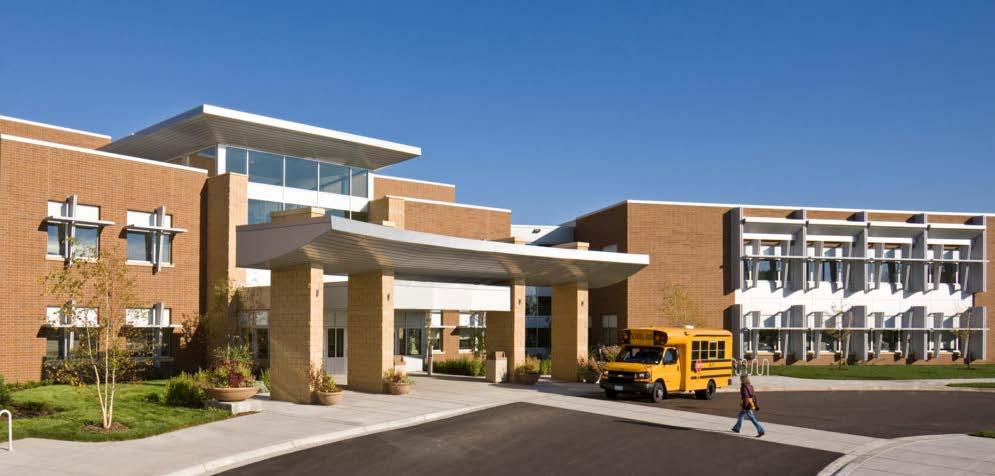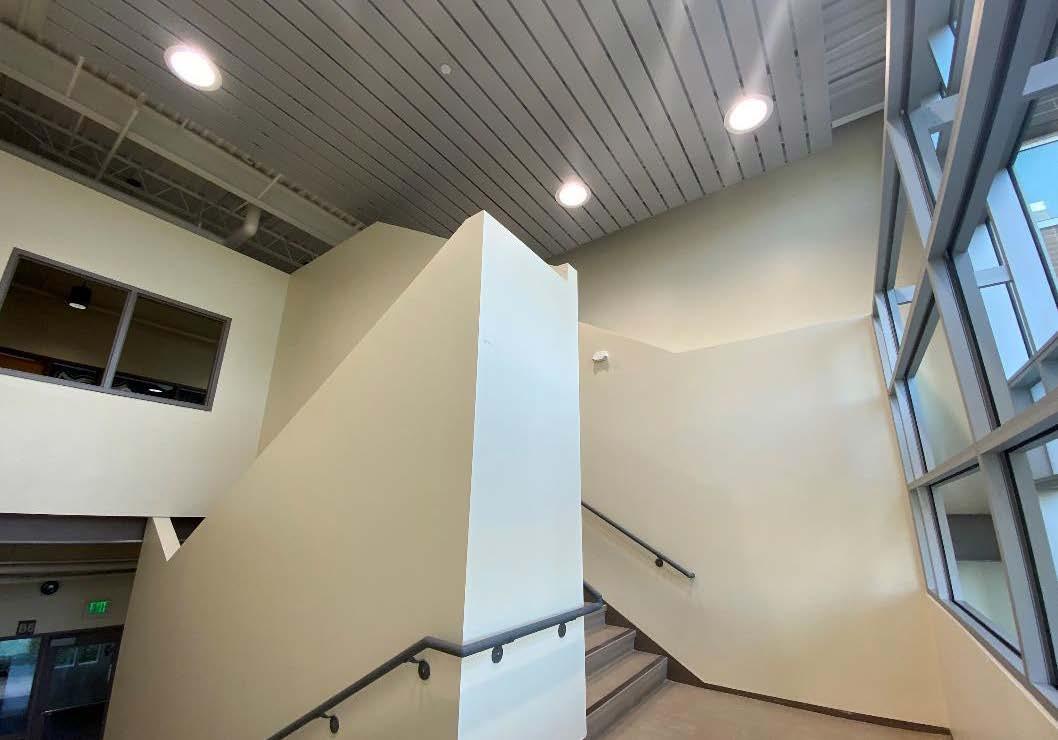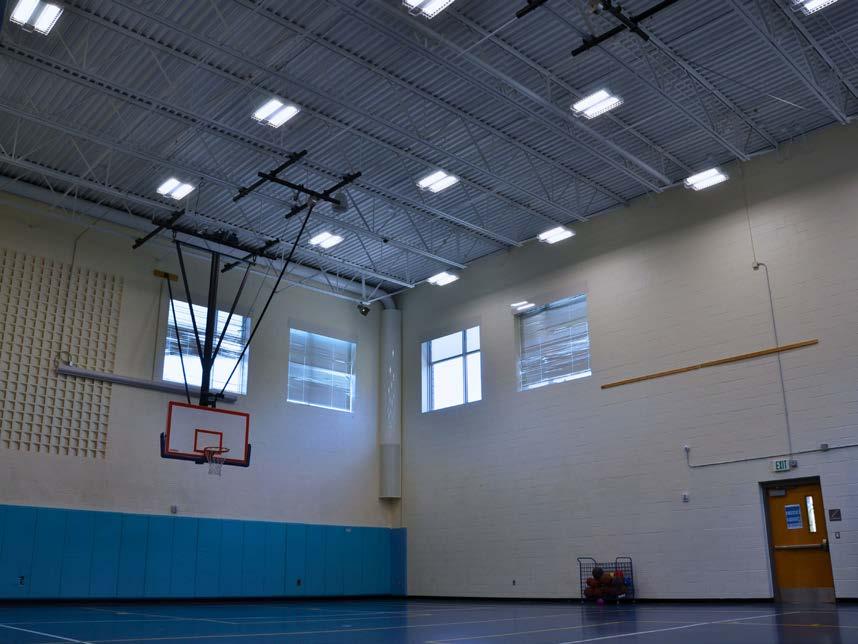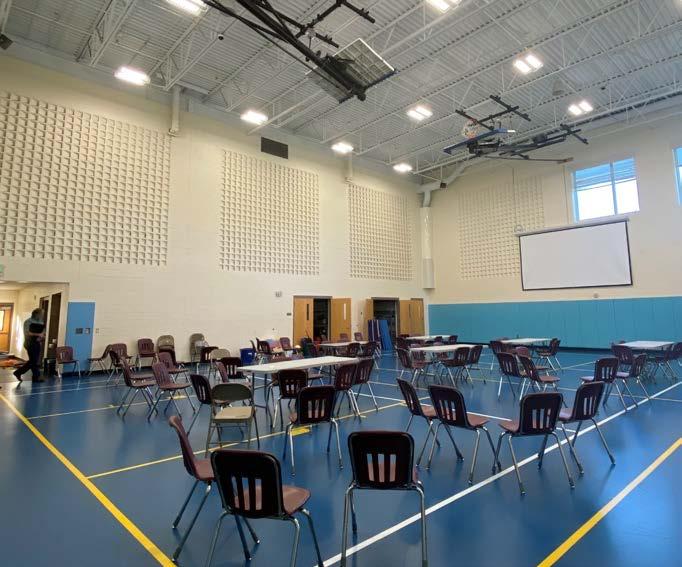
5 minute read
Smart Lighting for a Smart School
Retrofit Enhances Energy Efficiency and Control at South Education Center
By Parker Allen
Images courtesy of Intermediate District 287
When Intermediate School District 287’s South Education Center in Richfield, Minnesota, needed a lighting upgrade, it wasn’t just about swapping out bulbs. The existing lighting system, installed more than two decades ago, was failing, unsupported, and increasingly difficult to maintain.

For a school focused on serving students with unique educational and behavioral needs, the failing system was more than an inconvenience. It was a barrier to effective learning and operations.
Enter The Retrofit Companies, Inc. (TRC), a longtime member of NALMCO, who delivered a full-scale lighting and controls transformation that earned the project a 2025 NLB Lighting Transformation Award of Merit.
FROM OBSOLETE TO OPTIMIZED
The original lighting controls at the South Education Center were hardwired and centrally timed, but over the years, the system became unreliable. Fixtures failed to turn on or off as scheduled. Sensors no longer worked properly, and maintenance staff were left with no clear path to service or support.
“The timers weren’t working, and a lot of the sensors weren’t working, and they couldn’t get anyone to service it anymore,” said Jake Andrist, Sales Manager at TRC’s Retrofit Electric division.
With growing concerns about energy consumption and user experience, district officials partnered with TRC to find a solution. Their goals were clear: improve lighting quality, enhance controls, reduce energy costs, and maintain integration with the existing HVAC system.
A SYSTEMWIDE LED UPGRADE
The project was anything but a simple relamp. Over 1,400 fixtures—both interior and exterior—were either retrofitted or replaced.


TRC selected Philips EvoKit retrofit kits for the majority of classroom troffers, each integrated with luminaire-level wireless control nodes. In common areas such as hallways and cafeterias, fixtures were programmed to respond to occupancy, gradually brightening when spaces were entered and dimming when vacated.

These weren’t just on/off upgrades. Almost every interior fixture was equipped for network-level control, with occupancy sensing, dimming, and daylight harvesting built in.
Back-of-house spaces and some recessed can fixtures were retrofitted using Type B LED solutions, while gymnasiums received new Philips high-bay fixtures compatible with the Signify Interact Pro wireless control system.

INTUITIVE CONTROLS FOR COMPLEX NEEDS
The decision to implement a wireless, Bluetooth-enabled control system was driven in part by the ease of commissioning and use. The Signify Interact platform provided both wall-mounted wireless switches and app-based control, allowing custodians and staff to manage the system without the need for advanced technical training.
“We showed the custodial staff how to pair new fixtures and adjust settings via the app,” project lead Kevin Gabbert explained. “It’s intuitive. They can change out a fixture or reprogram a zone themselves.”

Each room could be tailored with custom control settings. Offices, hallways, and classrooms all received distinct control profiles based on occupancy patterns and lighting needs. Special education classrooms received an additional level of customization.
A highlight of the project was the inclusion of color-tuning technology in the school’s special education (SPED) classrooms. These rooms were outfitted with RGBW fixtures, controlled via wall-mounted iPads enclosed in protective metal casings.
Teachers use the app-based controls to adjust color temperature or even change lighting colors entirely, a feature that supports students with sensory sensitivities and encourages emotional regulation.
This level of control empowers teachers to adjust lighting dynamically throughout the day, based on student needs and classroom activities.
EFFICIENCY THAT PAYS
While user comfort and educational outcomes were top of mind, the energy savings achieved were equally impressive. According to TRC’s calculations, the project will save almost 500,000 kWh per year, equating to nearly $64,000 in annual energy savings. Electricity demand was reduced by more than 65 kW.
Aiding the district’s return on investment were robust financial incentives. Xcel Energy, via the Center for Energy and Environment (CEE), issued a rebate of more than $112,000. The City of Richfield also contributed a $2,500 grant, bringing total incentives to more than 32% of the project cost.
From design and specification to installation and commissioning, TRC managed every aspect of the project. Their in-house team of electricians performed the work, ensuring tight quality control and a seamless experience for the school.
A MODEL FOR FUTURE SCHOOLS
The lighting retrofit at Intermediate District 287’s South Education Center demonstrates how thoughtful design, advanced controls, and attention to user experience can work together to deliver long-term value. More importantly, it shows what’s possible when districts invest not just in energy savings, but in tools that directly benefit students and staff.
“Lighting in schools should never be an afterthought,” Andrist said. “Done right, it becomes an integral part of the learning environment.”








